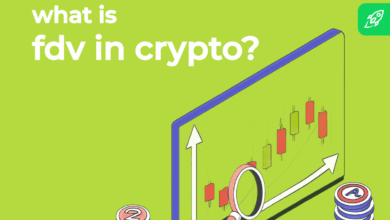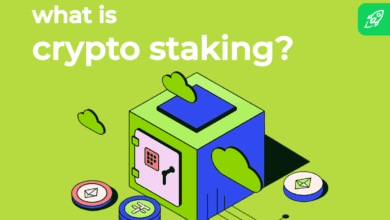Best coins to stake in 2024 for maximum gains

Staking coins is becoming increasingly popular as a way to generate passive income and take advantage of the blockchain technology revolution. Whether you are a beginner or an experienced investor, staking your coins can give you a steady stream of income. But with so many different options, it can be hard to know which one is right for you.
In this blog post, we’ll explore some of the best coins to stake, why they are worth considering, and what type of returns you should expect when investing in them. So if you’re interested in learning more about how staking can benefit your investments, read on!
What Is Crypto Staking?
Crypto staking is an engaging method for crypto enthusiasts to earn passive income. By diving into the world of crypto staking, investors have the opportunity to receive staking rewards thanks to the proof-of-stake (PoS) algorithms, all without the traditional hustle of mining a cryptocurrency. This presents a significant advantage over the older method of crypto mining, which demands costly equipment and hefty electricity expenses. Instead, with staking, individuals can easily get involved through specialized wallets or even via some crypto exchange platforms.
Years of research have gone into developing this technology, which has had positive effects on the security and scalability of blockchain networks. Besides, it facilitates increased decentralization. Whether you’re looking for more ways to diversify your portfolio or want to take part in something truly revolutionary, crypto staking may be the answer you’ve been looking for.
Staking Benefits: Why Stake Crypto?
Among the many advantages of staking, three benefits stand out in particular.
Firstly, staking allows users to earn rewards for merely holding specific cryptocurrencies in their wallets.
Secondly, it is much more secure than traditional trading methods because funds remain in user wallets during the process.
Lastly, it provides an opportunity for passive income and can potentially be used as a source of long-term wealth accumulation.
All in all, staking offers an attractive, secure way to generate income with minimal effort or risk — making it an appealing choice for both new and experienced crypto holders.
Risks of Staking
Crypto staking can be a lucrative way to gain passive income from cryptocurrencies and DeFi projects; however, it also carries risks that must be taken into account.
These include volatility of the underlying asset, events, or project-related news that could affect the value of your investment, as well as fees and taxes when withdrawing earned rewards. Therefore, crypto staking should never represent more than a portion of one’s overall investment portfolio, and one should always exercise due diligence before deciding whether to invest or not.
That said, with a little research, crypto staking can become an excellent way to benefit from the growth potential of cryptocurrencies while also receiving regular rewards.
Don’t get left behind — subscribe to our weekly newsletter!
What Are the Best Coins to Stake?
The 14 best staking crypto assets you may buy to begin earning staking rewards are thoroughly examined in the list below.
Ethereum (ETH)
Ethereum used to employ the PoW consensus algorithm until recently. Nevertheless, it converted to PoS, with more than $30 million in ETH being staked.
Ethereum: blockchain characteristics
Ethereum’s Merge represents the first stage in enabling sharding, which divides the network into “shard chains” that share the load of Ethereum. This should theoretically reduce network congestion and boost transaction throughput. These shard chains divide operations over 64 new chains as opposed to settling all transactions on a single blockchain. Beginning in 2023, sharding should allow the network to scale in enormous leaps.
What are Ethereum’s staking requirements?
To kick off staking Ethereum, validators must deposit a minimum of 32 ETH into the official deposit contract address. While Ethereum itself doesn’t offer delegation, various ETH staking pools have stepped in to allow staking with amounts less than 32 ETH. Additionally, with certain exchanges and wallets, users have the flexibility to start staking with as little as 0.1 ETH to 5 ETH.
However, for those looking to stake solo and operate a validator node on the Ethereum network, the steadfast requirement remains at 32 ETH.
How profitable is Ethereum staking?
The amount of ETH validated and the incentives the network is offering at any given time determine how much your reward will be for staking ETH.
Staking on Ethereum 2.0 currently has roughly a 3-4% annual percentage rate (APR).
Learn more about ETH staking in this article.
Polkadot (DOT)

Polkadot (DOT) is a revolutionary blockchain technology platform that enables inter-chain communication and wide-ranging scalability. It uses a unique heterogeneous sharding technique in order to create the world’s first “internet of blockchains.”
Polkadot: blockchain characteristics
Users can earn staking rewards by participating in Polkadot’s nominated proof-of-stake (NPoS) consensus method as either a validator or a nominator. Validators are in charge of confirming that transactions are accurate, and nominators watch out for validators’ proper conduct.
What are Polkadot’s staking requirements?
For nominators on the Polkadot network, there’s no fixed hardware requirement or necessity to run a node.
Validators face their own set of requirements, which includes the operational task of running a node. The starting point for validators in terms of DOT staked has shifted in response to the network’s evolving dynamics.
For those looking to become nominators on Polkadot, a minimum of 250 DOT is required to express their intention to nominate, essentially serving as a registration to enter the nomination pool. However, it’s important to note that this initial deposit does not guarantee a spot in earning staking rewards. The key factor determining participation is the minimum active nomination, a dynamic value that frequently surpasses 250 DOT, fluctuating based on the total DOT stake and the specifics of your nominations.
On the validators’ front, the entry threshold in terms of DOT staked is adjusted to match the network’s current demands and conditions. And let’s not forget about managing a node.
How profitable is Polkadot staking?
The possible profits from staking DOT on Polkadot with a validator are approximately 11.9%, whereas the potential returns on staking using an exchange or a staking pool like Uphold or Kraken are 7% to 14%.
Polygon (MATIC)

Polygon (MATIC) is a platform that provides infrastructure and development tools for building Ethereum applications.
Polygon: blockchain characteristics
Polygon utilizes optimistic rollup technology to enable fast, secure, and low-cost transactions on the blockchain. The Polygon network consists of a mainchain known as “plasma” and several sidechains that can be used to construct applications.
What are Polygon’s staking requirements?
There is no minimum amount set for MATIC delegation.
However, even if the system accepts any amount, validators have the option to set a minimum limit. In exchange for their node performing services, validators may also demand a commission. In addition to the commission charged, one must assess the validity of the validator, taking into account factors like average uptime or if the node has ever been compromised.
How profitable is Polygon staking?
The majority of the components that make a project a wise, long-term investment are present in Polygon. As a result, MATIC staking might be a very profitable endeavor for you. The token’s APY is currently around 4%.
Binance Coin (BNB)

BNB Chain (BNB) is a blockchain-based digital platform that seeks to provide users with more efficient and cost-effective solutions for digital asset trading.
Binance: blockchain characteristics
BNB allows users to perform high-speed, low-cost transactions on a decentralized ledger. All transactions are secure and shareable using the permissionless, open-source network of BNB Chain. Through its token economy, BNB opens up the potential for options such as staking, authorized investment contracts, and financial derivatives for digital assets. By promoting low costs and efficiency through smart contracts and dApps, BNB seeks to become the go-to platform for digital asset trading activities.
What are Binance Coin’s staking requirements?
You can stake BNB on a variety of exchanges, including Binance, Coinbase, and Kraken.
Another choice is to stake BNB using a hardware wallet. Due to the fact that you will retain ownership of your digital assets, staking via a hard wallet typically carries a smaller risk than staking on a centralized exchange.
There are also many choices for staking BNB via a software wallet, including Trust wallet, which provided a high APY on BNB staking in the past.
How profitable is BNB staking?
A number of variables will affect the rate of return on the tokens you stake, including the platform you use and the time window in which you stake the tokens. Binance is among the best crypto staking coins, paying up to 7% on BNB tokens staked for 365 days.
Tether (USDT)

A stablecoin called Tether (USDT) seeks to keep its peg to the US dollar. Tether offers cryptocurrencies’ advantages — faster, less expensive, permissionless transactions — without price volatility. The Tether team claims to have backing in the form of loans and bank reserves that equal or surpass the value of USDT currently in circulation.
Tether: blockchain characteristics
Tether Tokens exist as digital tokens built on multiple blockchains.
What are USDT’s staking requirements?
This depends on the staking platform you choose.
How profitable is USDT staking?
Depending on the staking period and the conditions of a particular crypto staking platform, you can expect annual yields in the range of 4% to 10%.
Algorand (ALGO)

Algorand is a secure, permissionless, and decentralized blockchain protocol built from the ground up to offer inclusive access and accountable economic participation for all. Invented by Turing Award winner Professor Silvio Micali, Algorand harnesses the power of cryptography to create a foundation where stakeholders can make fast, secure, and efficient transactions.
Algorand: blockchain characteristics
Code auditability, high transaction speed, scalability, carbon-negativity, and forkless design — those are only a part of Algorand’s features.
The protocol also supports smart contracts in a low-fee environment, which makes it ideal for a wide range of applications, including finance and digital trading platforms.
Ten billion ALGO tokens were mined at launch, and Algorand incentivizes token holders with rewards from the remaining supply to promote network engagement and governance.
What are Algorand staking requirements?
Basic participation awards are given to all ALGO holders. However, these entry-level prizes are modest by design and are given to motivate people to take part in governance and earn more.
You can register for governance and cast your vote on critical topics affecting the Algorand ecosystem to get extra rewards. Depending on how much of the network engages in governance, Algorand’s governance incentives have a higher potential yield, with earnings reaching up to 15%. Greater yields result from fewer individuals, while greater involvement results in lower individual yields.
To receive governance incentives, you must commit your tokens for three months.
How profitable is ALGO staking?
You can stake ALGO tokens in 4 different ways: delegate them via a centralized exchange, run your own node, participate in the platform’s governance or start liquid staking. How you choose to participate in the ALGO staking program determines your income.
PancakeSwap (CAKE)

PancakeSwap is a decentralized DeFi application on the Binance Smart Chain. It offers a secure and fast automated liquidity protocol, enabling users to easily swap or stake their cryptocurrencies. With PancakeSwap, users can become liquidity providers, farm yield-generating tokens, stake funds for rewards, and more. It also has a cryptocurrency exchange feature that allows users to access fast and low-cost automated buying and selling of digital assets at competitive rates.
PancakeSwap: blockchain characteristics
PancakeSwap is built on BNB Chain (previously known as BSC and Binance Chain). Instead of the conventional market model, where there is a seller and a buyer, PancakeSwap operates on the automated market maker (AMM) concept, where trading takes place through permissionless liquidity pools.
PancakeSwap offers securely encrypted storage services, 24/7 customer service support, flexible withdrawal options, and much more.
What are PancakeSwap’s staking requirements?
CAKE can be staked easily on the PancakeSwap platform, which offers an easy-to-use interface that makes it ideal for crypto newcomers as well as experienced traders. Users who help PancakeSwap with liquidity are compensated with LP tokens and receive a cut of the trading fees.
To ensure you maximize your profits when you stake CAKE, check the Farms page, where you can see which liquidity pool is best for farming CAKE and offers the most tokens. Since each pool has a unique compound rate and performance feed, the prize will vary according to that pool. To receive the best return on investment, you must consider the APR and APY rates.
No minimum quantity of CAKE is specified. Your ROI, however, will be based on the number of tokens staked and the duration of the investment.
How profitable is CAKE staking?
Staking PancakeSwap tokens has a high APR — the current reward rate is around 8% — and can produce a sizable passive income.
Solana (SOL)

Solana (SOL) is a blockchain-based distributed technology platform that focuses on providing maximum scalability and ultra-fast transactions. On-chain transactions and network fees are handled by the native staking token of the Solana network, SOL.
Solana: blockchain characteristics
Solana differs from other well-known PoS blockchains in that it employs a timestamping technique known as proof-of-history (PoH) consensus. Solana achieves an astoundingly fast block time of 400 milliseconds by blending PoS and PoH.
What are Solana’s staking requirements?
To participate in Solana staking, any holder of SOL can stake their tokens without a specified minimum amount, making it accessible to a wide range of investors.
The process involves using a compatible wallet to create a stake account into which SOL can be deposited. From there, these tokens must be delegated to a validator to start earning staking rewards.
This setup allows for flexibility in managing stake accounts and the amount staked with various validators to optimize reward potential. Key resources like Solanabeach.io and Validators.app, along with community forums, provide valuable insights into validator performance and network metrics to aid in decision-making.
How profitable is Solana staking?
The returns from staking Solana can differ greatly, influenced by the platform you choose and the time frame you lock assets for. With an entry threshold as low as 0.01 SOL, investors can potentially achieve an annual percentage yield (APY) of 6.5–8%, making it a flexible and accessible investment option for earning rewards.
Avalanche (AVAX)

Avalanche (AVAX) is a cloud-native blockchain protocol designed for unprecedented security and performance in decentralized finance (DeFi).
Avalanche: blockchain characteristics
Developed by Ava Labs, one of the leading innovators in blockchain technology, Avalanche offers a new consensus framework based on delegated proof-of-stake that outperforms existing platforms by an order of magnitude, including confirmation times of just 1 second. In addition to facilitating faster, more secure transactions than ever before, Avalanche provides users with access to multi-chain networks for enhanced interoperability.
What are Avalanche staking requirements?
With AVAX, you have two options for staking: either to run your own validator, which is more expensive and complex, or to delegate to an existing validator, which is considerably simpler. The majority of Avalanche investors would choose the latter option and delegate to a qualified validator.
Additionally, a delegator is required to have as little as 25 AVAX, whereas a validator must stake 2,000 AVAX.
How profitable is AVAX staking?
The current maximum annual percentage rate (APR) given to a validator in exchange for staking AVAX is around 9%.
Cardano (ADA)

Cardano is a public, third-generation blockchain network developed by IOHK and currently being led by Charles Hoskinson. Unlike Bitcoin, which focuses on providing a peer-to-peer electronic cash system, Cardano prioritizes the addition of groundbreaking features like smart contracts and decentralized applications (dApps).
Cardano: blockchain characteristics
Cardano utilizes advanced cryptography to secure its transactions and uses the proof-of-stake consensus mechanism Ouroboros to validate the network. Cardano also harnesses formal verification techniques to mathematically prove programs correct, rather than relying solely on testing to find bugs. All these features make ADA a powerful digital currency with many potential real-world applications in the public sector and financial services.
What are Cardano’s staking requirements?
On Cardano, staking rewards can be obtained by managing a staking pool and delegating stakes. Stake delegation does not require any special hardware or network activity, such as hosting a node, and allows ADA holders to delegate their ADA into staking pools.
Also, with ADA, users have the ability to withdraw any amount of their staked coins whenever they like.
How profitable is Cardano staking?
Cardano staking has the potential to produce annual profits of up to 3%. Rewards are calculated and distributed at the end of each epoch (approximately every five days). Cardano (ADA) offers flexible staking rewards, and the amount of passive income you can generate varies depending on the crypto exchange and lockup time.
We also have a comprehensive guide on Cardano staking — click here to keep on reading.
USD Coin

Stablecoins such as USD Coin (USDC) have become increasingly popular due to their stability, global acceptability, and efficiency when it comes to transferring funds. USDC even goes a step ahead of its counterparts like Tether, as it is properly audited on a monthly basis by Grant Thornton, LLP. This assures customers that the USDC held in their wallets is backed by actual fiat money, ensuring maximum security. It’s no wonder that many investors resort to using USDC for their transactions, which leads to faster movement of funds on a global scale.
Users can expect an average APY of 4% when staking this type of asset.
Cosmos (ATOM)

Cosmos (ATOM) is a decentralized network of multiple blockchains aiming to make it easy for developers to create new blockchains and applications. The network provides the common components needed by various projects so they can interact with each other in a secure, reliable, and interoperable way.
ATOM, the native currency of Cosmos, helps maintain consensus using a proof-of-stake model that allows users to earn rewards for taking part in transaction validation. You can participate in the security and administration of the Cosmos Hub by staking ATOM, and you can get paid for ensuring the network’s safety. The APY for staking ATOM can be as high as 20%.
Tezos (XTZ)

Tezos (XTZ) is a unique, self-governed decentralized computing platform that scales securely, allowing users to utilize smart contracts, build dApps, and participate in the on-chain governance process.
XTZ token holders can commit their tokens in exchange for the power to validate blocks and get incentives. Voting rights are also granted to participants who deposit at least 8,000 tokens in the network, allowing them to influence the project’s development.
Staking Tezos typically yields an average return of 4–7% APY, although this rate can fluctuate based on various factors.
Hydra (HYDRA)

The combination of deflationary and inflationary dynamics in Hydra makes it one of the more distinctive staking coins on this list. This approach enables Hydra to burn almost all of its transaction fees while keeping inflationary block rewards. Users are ultimately safeguarded from price declines as a result.
Hydra (HYDRA) is a notable cryptocurrency for staking, providing an attractive estimated annual percentage yield (APY) of 41.37% over the course of 365 days.
How to Choose Best Staking Coins for Passive Income
When it comes to selecting the best coins to stake, it’s important to do your research. You want to be certain that your investment will pay off in the long term, so choose coins you believe in and trust.
Other characteristics you should pay attention to include:
- Coin Supply: Opt for coins with a fixed supply. A limited supply means the coin’s value could increase as demand goes up, potentially leading to larger payouts for you.
- Staking Requirements: Each coin has its own rules on how much you need to stake. Make sure to check these before you commit.
- Reward Rates: Check out potential earnings by looking at yearly staking reward rates. Websites like Staking Rewards can give you a good overview.
- Staking Options: Staking can be done through pools, directly on exchanges, or by validating transactions. Understand the options and requirements well to make an informed choice.
- Real-World Use: Coins used in real-life applications tend to be more valuable. Look for coins that are not just theoretical but have actual, practical uses.
How to Start Staking Cryptocurrency
Starting your journey into cryptocurrency staking can be an exciting way to earn passive income while participating in the blockchain ecosystem. Here’s a structured approach to get you going:
1. Verify Staking Support and Wallet Preparation
Ensure the cryptocurrency you’re interested in staking is eligible for such activities. Transfer your holdings to a compatible wallet that supports staking.
2. Acquire Crypto
If you’re starting from scratch and need to acquire stakable cryptocurrencies, we at Changelly offer a wide selection of over 500 crypto coins, promising competitive rates – check it out!
3. Initiate the Staking Process
Staking involves participating in the network by either setting up a node or validating transactions, which, over time, rewards you. However, operating a node comes with its challenges, including potential financial and time investments, and not to mention, the technical hurdles. For those looking for a less cumbersome route, joining a staking pool or utilizing services offered by trustworthy third-party wallets and exchanges can be a more accessible alternative.
4. Understand the Risks and Conduct Due Diligence
It’s paramount to acknowledge the risks associated with staking. The landscape of staking is marked by its volatility, where protocols frequently adjust their reward rates, affecting both the nominal reward rate and adjusted reward. Before committing, extensively research the platforms or wallets you consider for staking services. Keep an eye out: projects that offer incredibly high APYs often lack robust security measures, putting you at a higher risk of hacks and scams.
5. Embrace Safety and Start with Established Cryptos
For beginners, it’s advisable to begin with cryptocurrencies that have a significant market capitalization and to use established staking platforms. This approach minimizes risks as higher market cap coins tend to have more stability. Pursuing the highest APY offerings without proper research can lead to complications, underscoring the importance of safety and thorough vetting in the crypto space.
6. Commit to Constant Learning
Crypto staking requires ongoing attention and learning. The crypto market evolves rapidly, necessitating that you stay informed about the latest developments.
The details provided here are current as of this writing, but the dynamic nature of cryptocurrency staking means conditions can and will change. Protocols update their staking rules, and reward rates can fluctuate.
With the right knowledge and understanding of the processes involved in staking cryptocurrencies, you can become an active member of any blockchain network while earning passive income along the way!
Crypto Platforms With High Staking Rewards
Finding the right crypto platform for staking can be a difficult task, given the sheer number of options available. In addition, there is no single best crypto staking platform with the best conditions for all crypto staking coins. We recommend you to concentrate on the following key parameters to select the finest crypto staking platform:
- APY rates
- Lockup conditions
- Supported currency
- Fees and commissions
- Security level
- Client support center
That being said, there are a number of popular platforms that proved themselves. This list includes Binance, Coinbase, eTORO, OKX, Nexo, Kraken, and others. Ultimately, choosing the right platform comes down to doing your own research to find one that meets both your financial and customer service requirements.
Key Takeaways
Staking crypto has become a popular income-generating strategy for investors and traders. With due diligence, staking can produce big passive rewards with relatively low risk. There are various levels of staking available depending on the investor’s knowledge and willingness to put in extra effort to get the best possible returns. So if you’re looking to step up your income potential while mitigating some of the risks associated with traditional trading strategies, look no further than staking as a viable option that could be worth exploring.
FAQ
What coin is staked the most?
The most popular crypto assets for staking are ETH, SOL, BNB, AVAX, and ADA.
Which coin is best for staking?
Based on the research, forecasts, and trends in the market, staking Ethereum yields some of the best long-term returns.
Although Ethereum requires users to lock their funds while staked, they will receive rewards — in Ether — once a successful stake is completed. This can also be an easy form of passive income that doesn’t require monitoring prices all the time. Ethereum has strong network security and, besides, due to its popularity in both mainstream and cryptocurrency circles, is less likely to experience devaluation than some other coins on the market. All these factors make Ethereum a great choice to stake your funds with confidence.
Can I stake my BTC?
No, you cannot stake Bitcoin as it operates on a proof-of-work mechanism. This system involves mining rather than staking, the latter being a distinctive feature of networks operating on proof of stake.
Some websites suggest Bitcoin staking because of protocols that enable indirect staking activities, using projects like Wrapped Bitcoin (WBTC) and Stacks. These projects allow Bitcoin to participate in staking-like operations on other blockchains, such as Ethereum’s DeFi ecosystem.
Essentially, while Bitcoin itself does not support direct staking due to its proof-of-work nature, there are alternative methods for Bitcoin holders to earn rewards.
Which crypto wallet is the best for staking?
Choosing the best crypto wallet for staking depends on the specific cryptocurrencies you wish to stake.
For instance, Exodus is a user-friendly and secure option for staking Solana. However, if you’re interested in staking Avalanche (AVAX), the Core wallet is your go-to, as it supports direct staking while keeping your AVAX secure in your wallet.
When dealing with multiple cryptocurrencies, you might need different wallets to optimize each coin’s staking potential. Remember, keeping your digital assets in separate wallets (like separate baskets for your eggs) enhances security.
Can I lose my coins when staking?
The risk of losing coins during staking varies depending on whether the staking is custodial or non-custodial.
In non-custodial staking, like with Cardano, Algorand, or Tezos, you retain full control over your cryptocurrencies and the risk of losing them is minimal.
However, in custodial or delegated staking, such as with Ethereum, DOT, or AVAX, your coins are held in the validator’s wallet, which introduces a degree of risk, primarily from potential validator misconduct or breaches.
It’s essential to understand these differences and choose your staking platforms wisely to minimize risks.
Is staking better than holding?
Both staking and holding (or “HODLing“) are strategies aimed at long-term investment growth. Staking offers the additional benefit of earning rewards, akin to dividends, for participating in the network.
However, it requires a more active engagement and understanding of the market risks, such as smart contract vulnerabilities and liquidity constraints. Holding is more passive and doesn’t bind your assets, allowing you to sell whenever the market is favorable.
Ultimately, the better choice depends on your financial goals, risk tolerance, and involvement in the crypto ecosystem.
What is the easiest crypto to stake?
For newcomers to crypto staking, starting with Cardano (ADA), SushiSwap (SUSHI), Ethereum (ETH), and Cosmos (ATOM) can be a smart move. These cryptocurrencies stand out not only for their varied reward systems and liquidity options but also for offering beginners a straightforward gateway into crypto staking’s benefits.
However, it’s essential to grasp that the staking protocol—the set of rules governing the staking process—differs from one coin to another. These protocols can stipulate holding a minimum amount of the cryptocurrency, locking up your coins for a certain duration, or operating specific nodes. Familiarizing yourself and being comfortable with your chosen coin’s staking protocol is crucial for a successful staking experience.
Is staking crypto worth it?
Yes, staking cryptos can be a highly profitable form of earning passive income. This way of making money has a lot of advantages over traditional investments and is definitely worth exploring further.
How much can you earn from staking?
Depending on the coin and the amount you are staking, your earnings can vary greatly. Generally speaking, staking can produce an annual percentage yield of anywhere between 4% and 10%.
Can you make a living off crypto staking?
It may be difficult to make a living solely off of crypto staking rewards alone. But experienced traders who already have a working knowledge of the crypto market can potentially increase their profits with crypto staking.
Is there a downside to staking crypto?
Yes, there is. Staking tokens involves locking up your assets for a period of time, meaning if prices rise during this time, then you won’t be able to capitalize on it until you sell your stake back into the market.
Disclaimer: Please note that the contents of this article are not financial or investing advice. The information provided in this article is the author’s opinion only and should not be considered as offering trading or investing recommendations. We do not make any warranties about the completeness, reliability and accuracy of this information. The cryptocurrency market suffers from high volatility and occasional arbitrary movements. Any investor, trader, or regular crypto users should research multiple viewpoints and be familiar with all local regulations before committing to an investment.





